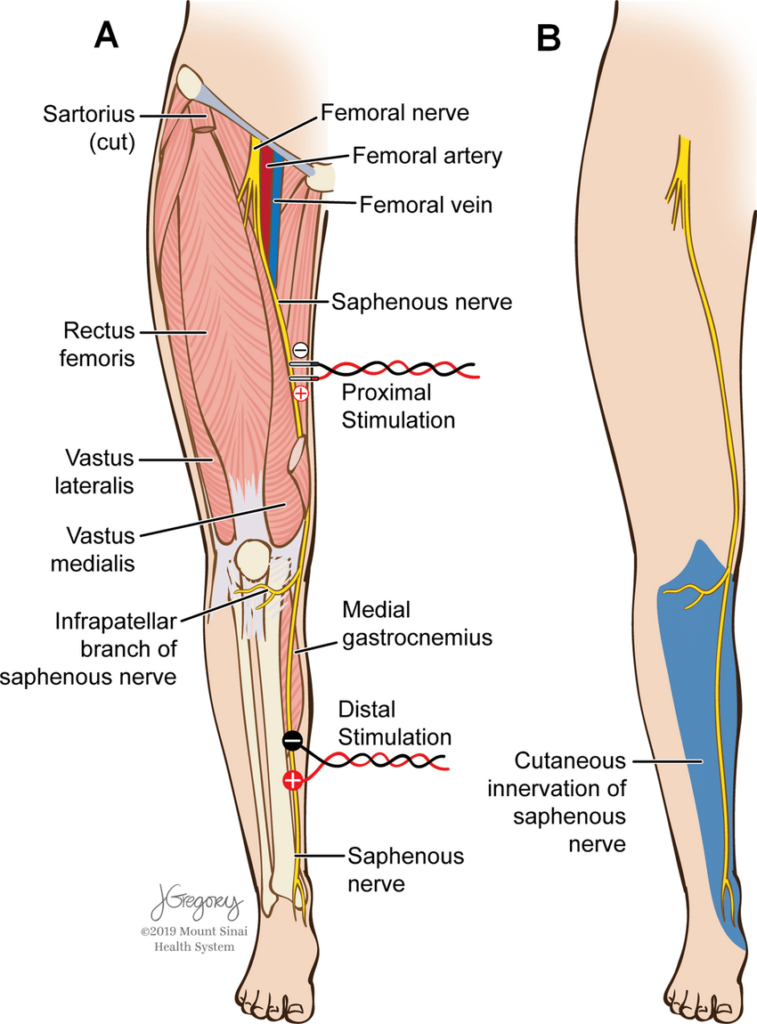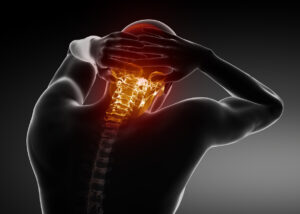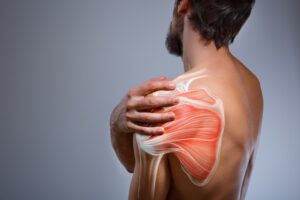Saphenous Nerve Entrapment Causing Inner Knee Pain and Inner Knee Pain Treatment in Toronto
If you are suffering from atraumatic knee pain the most important thing to know is that the knee is rarely the actual problem! While the knee might hurt, it is usually painful because of a problem with the function of the hip or the ankle. But, in some cases, an entrapped or “pinched” nerve can be the underlying cause! If you are trying to find the best inner knee pain treatment in Toronto then make sure you see someone that is going to get to the root cause!
Among the various causes of knee pain, saphenous nerve entrapment or dysfunction is a frequently overlooked but significant contributor. In this blog post, we delve into what saphenous nerve entrapment entails, its role in causing knee pain, and explore effective treatments to alleviate this discomfort.
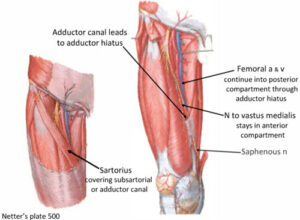
How Can A Saphenous Nerve Entrapment Cause Knee Pain: Inner Knee Pain Treatment in Toronto
The saphenous nerve is a branch of the femoral nerve, stemming from the lumbar spine and coursing down the leg, innervating various structures around the knee and lower leg. Entrapment or dysfunction of the saphenous nerve occurs when it becomes compressed or irritated along its pathway, leading to pain, numbness, and tingling sensations in the knee and surrounding areas.
Causes of Saphenous Nerve Entrapment: Several factors can contribute to the entrapment of the saphenous nerve, including:
- Trauma: Direct trauma to the knee, such as a fall or impact, can result in compression of the saphenous nerve, leading to symptoms of entrapment.
- Overuse or Repetitive Stress: Activities that involve repetitive knee movements or prolonged kneeling can place excessive pressure on the saphenous nerve, causing irritation and entrapment.
- Anatomical Variations: Certain anatomical variations, such as tight fascial bands or muscle hypertrophy in the thigh region, can predispose individuals to saphenous nerve entrapment.
- Medical Conditions: Conditions such as arthritis, bursitis, or inflammatory disorders can contribute to nerve irritation and entrapment around the knee joint.
We see this condition mostly with cyclists and newbie runners. In the case of cycling, a poor bike fit that places stress on the inner knee and groin muscles is often to blame. This will often occur with a seat position that is too high and/or too far back from the pedals. Excessive tension in the groin and quadriceps seems to aggravate the saphenous nerve and eventually lead to knee pain.

Symptoms of Saphenous Nerve Entrapment
The symptoms of saphenous nerve entrapment can vary in intensity and presentation but commonly include:
- Pain along the inner aspect of the knee
- Numbness or tingling sensation in the knee or medial lower leg (more rare)
- Sensitivity to touch over the course of the saphenous nerve (this is VERY common and often is the most recognizable symptom early in the injury/disease process).
- Weakness or instability in the knee joint (usually resulting from gluteal inhibition and hip weakness arising from the knee and/or spine)
- Swelling or inflammation around the knee region (a late-stage symptom)
In our office, we try to provide the best inner knee pain treatment by understanding the root of the issue through a comprehensive NeuroStructural Examination. An obvious saphenous nerve entrapment will present with altered sensation at the knee or lower leg but we rarely see this. Because the saphenous nerve is a sensation nerve, if it is irritated it could potentially make the knee more sensitive to pain – even when there is not really an injury! We typically see increased knee sensitivity and muscle spasms of the groin muscles around the adductor canal that this nerve travels through.
Whoever you see for this issue, make sure that all of the nerves that supply sensation to the knee are being addressed.
Finding the best inner knee pain treatment in Toronto | Saphenous nerve entrapment
Diagnosing saphenous nerve entrapment requires a thorough clinical evaluation by a healthcare professional, including a detailed medical history and a thorough physical examination that includes neurological testing. Imaging studies such as MRI or ultrasound to rule out other causes of knee pain are rarely needed.
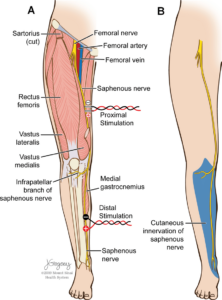
Once diagnosed, treatment strategies for saphenous nerve entrapment aim to alleviate symptoms and address the underlying cause. Some effective treatment options include:
- Address any underlying structural causes of imbalance
- Address any biomechanical causes for the specific proactive sport or activity – a bike fit or running gait assessment is important for those athletes.
- Address the peripheral nerve dysfunction or irritation – we find electroacupuncture to be best for this
- Nerve flossing! This is a great rehab exercise for this condition
- Rule out any spine involvement
Saphenous nerve entrapment is a common yet often overlooked cause of knee pain, affecting individuals of all ages and activity levels. Understanding the underlying mechanisms and associated symptoms is crucial for accurate diagnosis and timely intervention. If you’re experiencing persistent knee pain or suspect saphenous nerve entrapment, consult with a healthcare professional for proper evaluation and management tailored to your needs.

